Can love be a positive force for change in the public sphere as well as in our private lives? Is there any scientific basis for believing that love can stretch beyond the boundaries of our intimate relationships? What do the latest developments in human biology and psychology have to say?
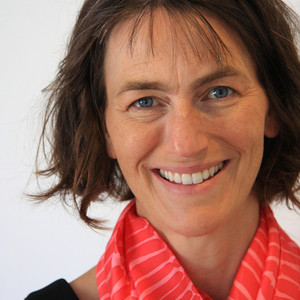 Barbara Fredrickson, Ph.D., is the Kenan Distinguished Professor of Psychology and the principal investigator of the Positive Emotions and Psychophysiology Lab at the University of North Carolina, Chapel Hill.
Barbara Fredrickson, Ph.D., is the Kenan Distinguished Professor of Psychology and the principal investigator of the Positive Emotions and Psychophysiology Lab at the University of North Carolina, Chapel Hill.
Barbara Fredrickson is better qualified than most other people to answer these questions. A professor at the University of North Carolina at Chapel Hill and a leading figure in the burgeoning positive psychology movement, her new book is titled Love 2.0: How Our Supreme Emotion Affects Everything We Feel, Think, Do, and Become. In it, Fredrickson tries to show that love for others—all others—can be consciously cultivated and applied in every sphere of life.
Positive psychology has been criticized for ignoring the structural factors that underpin discrimination and inequality, and for over-emphasizing the power of individuals to shape their own horizons. But Fredrickson doesn’t see any conflict between accentuating the positive in our own lives and extending our concern to other people. Quite the opposite: she sees positive emotions, empathy and love (or what she calls “micro-moments of connection”) as points along the same continuum that can be strengthened by using exercises like “loving-kindness meditation.” To find out more, I spoke with Barbara Fredrickson.
Michael Edwards: You debunk the common understanding of love as romantic attachment, and explain it instead in terms of positive emotions that our bodies can understand, experience, and develop beyond our friends and families. But are positive emotions really the same thing as love?
Barbara Fredrickson: Love is both positive emotions and larger than the self. We typically think in western culture of emotions as belonging to a person—being confined to one person’s brain, mind, or skin. Here I’m arguing that actually people co-experience emotions, especially positive ones, and when they do, that’s when they are reminded in an experiential way that they are part of something larger than themselves, that they share a human connection, whether it’s with a person they know well or a stranger. It’s where we experience our common humanity.
The roots of my work come from evolutionary psychology, so I’m trying to describe experiences that are often called out as ineffable, spiritual, or transcendent and say well actually, these are products of our emotions. They are what we experience when we connect, a positive emotion that’s rolling through two brains and bodies at once. It’s a powerful, uplifting feeling and it turns out to be extraordinarily healthy. But the benefits accrue not just to one person’s health but to the health of communities, and that is where it connects really well to your idea of social transformation.
ME: By describing love in this way, isn’t there a danger that we will cut ourselves off from negative emotions such as anger and a sense of injustice that are essential to social struggle?
BF: No, I don’t think so. From an emotions perspective, I like to tell people that no emotion is meant to last forever, not even the ones that feel good. So the fact that we can understand love better doesn’t mean that we won’t have experiences of anger or outrage or sadness. Negative emotions are essential for flourishing and creativity and resilience.
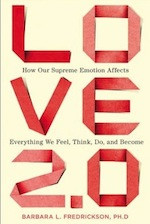 Barbara Fredrickson's new book, Love 2.0: How Our Supreme Emotion Affects Everything We Feel, Think, Do, and Become
Barbara Fredrickson's new book, Love 2.0: How Our Supreme Emotion Affects Everything We Feel, Think, Do, and Become
One of the important empirical lessons that psychology has uncovered is that creativity is not just supported by increased positive emotions—a little bit of negativity is useful too. The key is to keep them in balance. To the extent that negativity dominates, you risk eroding your resilience, and I’m sure this is a perennial conversation around activism and how to keep yourself from being burned out. Part of the way to stay resilient is to be able to self-generate positive emotions that can sit side by side with the negative ones, not eclipsing them but helping to make us whole.
Exercises like loving-kindness meditation help to pull us out of our self-absorption. They can counter an excessive self-focus and build habits of greater other-focus, so that when we see others we see more of them—we see their humanity and we don’t just see them as a means to the end of what we want to accomplish that day. Being able to see and appreciate others in their full humanity is something that we get lulled out of by self-absorption or by our increasing reliance on technology.
ME: You say that love cannot be unconditional. Doesn’t that go against the driving force of the best of religion, spirituality, and social movements?
BF: Well, I’m being purposely provocative in trying to help people see these positivity levels, or love, or micro-moments of connection, as a particular emotional state that doesn’t arise no matter what, or regardless of conditions. I’m operating at a different level of analysis when I say “unconditional.” What I’m actually saying is that love is conditional on two preconditions. One is that people feel safe, and the other is that they feel a real-time sensory connection with another person.
There’s some suggestion that physiologically we have two modes of being: one in “self-survival” mode anytime we feel unsafe and have to pay attention to our own actions and what we need to survive; and the other being “species survival” mode where there’s more focus on caring for others. If we’re in self-survival mode and feel unsafe, then the other person is going to seem like a threat and we’re not going to want to connect or share anything with them. That’s probably the most important thing that prevents people from experiencing the benefits of micro-moments of connection.
We know that people who are depressed or chronically lonely experience encounters with another person almost always as a threat, whereas people who are enjoying better mental health see opportunity and connection. So the way you can expand people’s experiences of love is to expand the pool of moments in which they feel safe.
The other precondition is a real-time sensory connection, because so much of a shared positive emotional state requires a shared sensory experience—making eye contact, or through touch or shared voice, because so much emotional information is carried in the vocal tract. Studies suggest that when people don’t make eye contact and don’t mimic each other’s facial expressions, no neural simulations of what the other person is feeling get triggered, so there isn’t necessarily a shared biological state. The nice thing about knowing these things is that once you understand the importance of these preconditions you can actually build them up.
ME: The title of your book states that love affects everything we do, so how does it affect the way we behave in politics, economics, and social activism?
BF: Well, I’m coming at this from the perspective of trying to understand emotions, so I have a particular stance. It’s not that I’m not interested—but that would have been another book. I’ve taken on a lot just by trying to change the way people think about this elemental piece of the puzzle. So I think it would be great for me or someone else to take these ideas in that direction. I think it’s crucial in terms of how we create any kind of human organization. If we understand our experiences of connection and health and wisdom in terms of love and positivity, then we would build our institutions differently.
It’s partly a challenge of interdisciplinary dialogue in that a lot of the things you’re describing are beyond the boundaries of psychology as a scientific discipline. They are fascinating and important, but we tend to work in silos, and the questions you are raising require connections across political science, psychology, sociology, and economics, whereas my work bridges more towards medicine. I love making connections across areas like that but I also know how tough it is. So you’ve planted an important seed.
A slightly different version of this Q&A originally appeared in the online journal Transformation, which tells the stories of people who are combining personal and social change in order to re-imagine their societies.

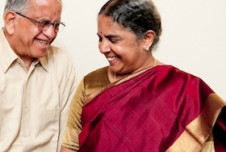
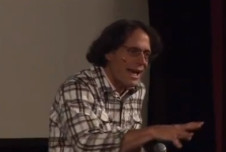
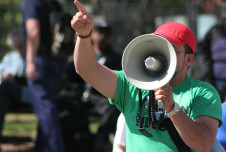



Comments